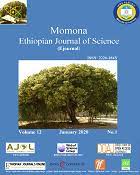Susceptibility of Solanum melongena L/Solanaceae to Drought at Different Growth Stages
Keywords:
Critical stage, Drought, Eggplant, Growth, Osmolytes, Yield, NigeriaAbstract
The study on the susceptibility of Solanum melongena to drought at different growth stages was conducted in the 2019 and 2020 growing seasons. S. melongena is one of the most relevant agricultural crops in the tropics and subtropical regions of Africa. However, drought has a significant effect on the rate of growth and fruit yield of the crop. However, the growth stage at which S. melongena is vulnerable to the effect of drought needs detailed research and clarification which is the focus of this study. Key morphological traits such as shoot height, number of leaves and branches, and leaf area and water-related physiological indices such as leaf area ratio, net assimilation rate, root shoot ratio, tissue water content including aboveground biomass, leaf relative water content, chlorophyll pigments, osmolytes accumulation, and antioxidants were observed and measured to find the effect of drought at different growth level. The result revealed that the morphological traits, water-related physiological indices, aboveground biomass, leaf relative water content, photosynthetic pigments, antioxidants such as alkaloids and flavonoids of S. melongena were drastically reduced under drought throughout the growth period, associated with vegetative, flowering, and fruiting stage. Osmolytes such as phenol and proline were more enhanced. Across the growth stages, S. melongena subjected to drought at the vegetative stage has exhibited the lowest performance in the measured parameters and has the lowest critical value. S. melongena at the vegetative stage was more vulnerable to drought than the flowering and fruiting stage. Susceptibility to drought of the crop at the vegetative stage can lead to poor growth and yielding.

